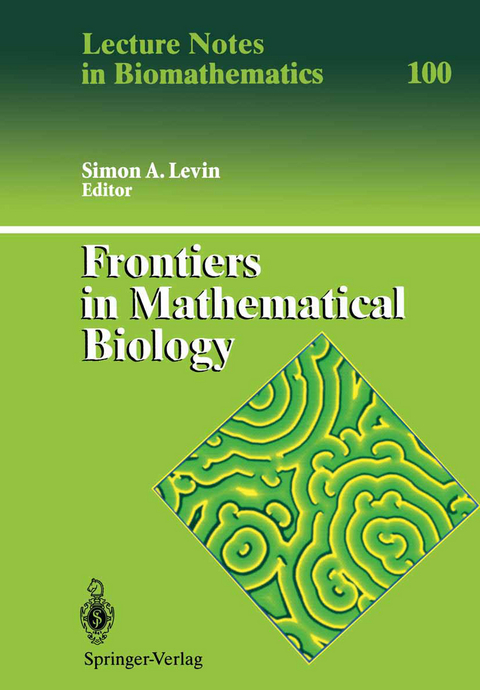
Frontiers in Mathematical Biology
Springer Berlin (Verlag)
978-3-642-50126-5 (ISBN)
I. Frontiers in Cell and Molecular Biology.- Reflections on Mathematical Contributions to Understanding the Molecular Basis of Life From 1970 to the 21 st Century.- Genomes, Maps and Sequences.- Cell Protrusions.- Cell Motion and Orientation: Theories of Elementary Behavior Between Environmental Stimulation and Autopoietic Regulation.- II. Frontiers in Organismal Biology.- Pattern Formation in Tissue Interaction Models.- Toward Artificial Competence.- Norbert Wiener's Brain Waves.- Puzzles About Excitable Media and Sudden Death.- Immune Networks and Immune Responses.- III. Frontiers in Evolutionary Biology.- Evolution of Gene Families: A Clue to Some Problems of Neo-Darwinism.- The Changing Role of Population Genetics Theory.- Some Advantages and Disadvantages of Recombination.- The Morphometric Synthesis: A Brief Intellectual History.- Behavioral Ecology, Epidemiology and Population Genetics: The Undiscovered Country.- IV. Frontiers in Population Ecology.- Stochastic Demography and Life Histories.- On the Reciprocal Relationship Between Life Histories and Population Dynamics.- Structured Population Dynamics.- Modelling Social Animal Aggregations.- Spatial Chaos and its Role in Ecology and Evolution.- V Frontiers in Community and Ecosystem Ecology.- Speculations on the Future of Food Webs.- Lorenzo Camerano's Contribution to Early Food Web Theory.- On the Equilibrium of Living Beings by Means of Reciprocal Destruction.- Frontiers in Ecosystem Science.- Individual-Oriented Approaches to Modeling Ecological Populations and Communities.- A Metaphysiological Approach to Modeling Ecological Populations and Communities.- The Trophodynamics of Whole Ecological Communities.- Modeling Contact Structures in Biology.- VI. Frontiers in Applied Biology.- Conservation and SpatialStructure: Theoretical Approaches.- A Thousand and One Epidemic Models.- Uncertainty and Fisheries Management.- Ecological Risk Assessment in Aquatic Populations and Communities: The Next Generation.- VII. Mathematical Challenges.- Health Information in Developing Countries.- What Everyone Should Know About the Belousov-Zhabotinsky Reaction.- Avoiding Chaos.- Model Building as an Inverse Problem in Biomathematics.- Some Remarks on Estimation Techniques for Size-Structured Population Models.
| Erscheint lt. Verlag | 5.6.2012 |
|---|---|
| Reihe/Serie | Lecture Notes in Biomathematics |
| Mitarbeit |
Assistent: E. Perlin, C. Levin |
| Zusatzinfo | X, 633 p. |
| Verlagsort | Berlin |
| Sprache | englisch |
| Maße | 170 x 244 mm |
| Gewicht | 1036 g |
| Themenwelt | Informatik ► Weitere Themen ► Bioinformatik |
| Mathematik / Informatik ► Mathematik ► Angewandte Mathematik | |
| Schlagworte | Biomathematics • Ecology • ecosystem • ecosystem ecology • Evolution • evolutionary biology • Mathematical Ecology • Mathematicall biology • Molecular Biology • pattern foormation • theroetical biology |
| ISBN-10 | 3-642-50126-5 / 3642501265 |
| ISBN-13 | 978-3-642-50126-5 / 9783642501265 |
| Zustand | Neuware |
| Haben Sie eine Frage zum Produkt? |
aus dem Bereich


